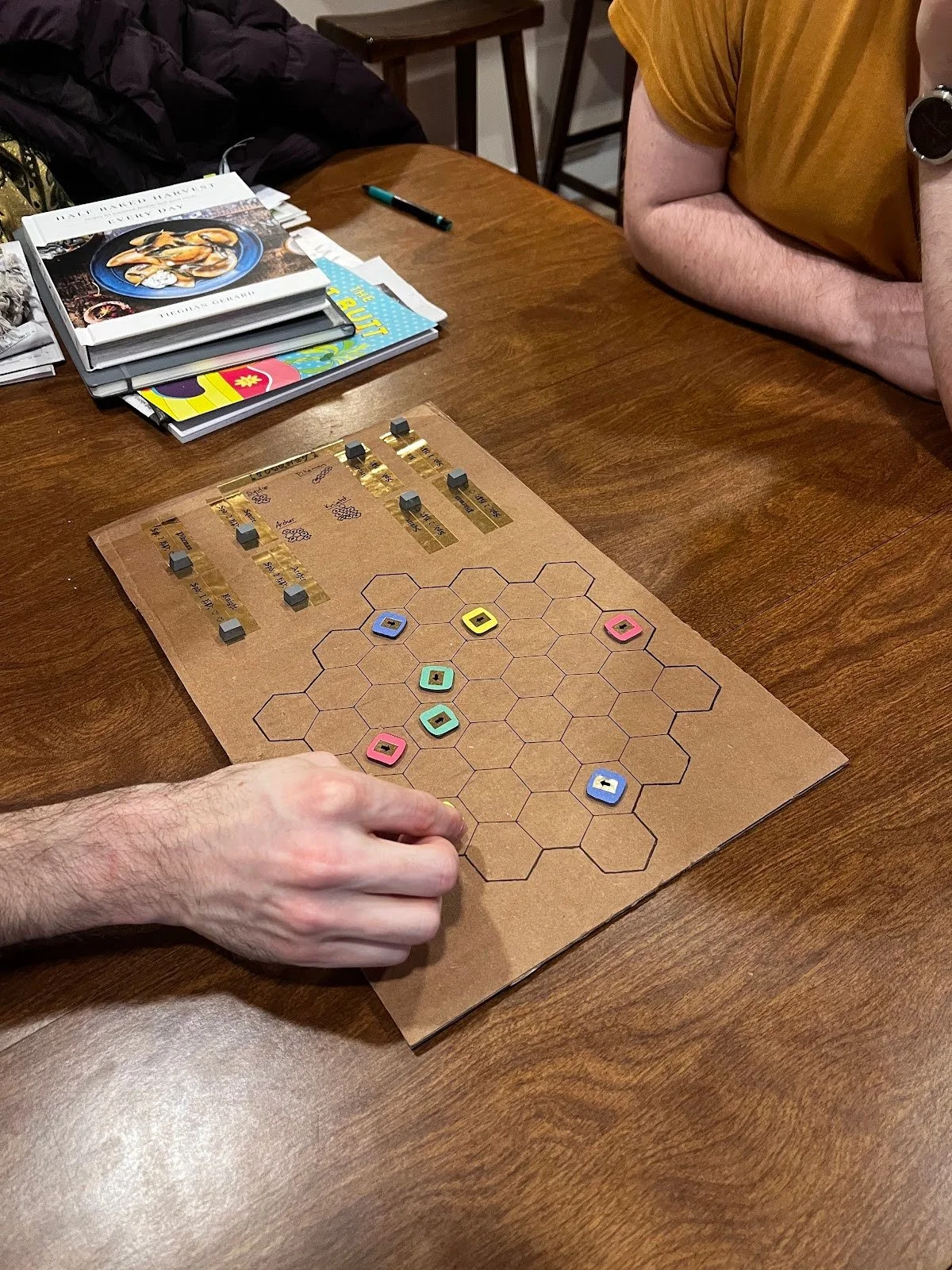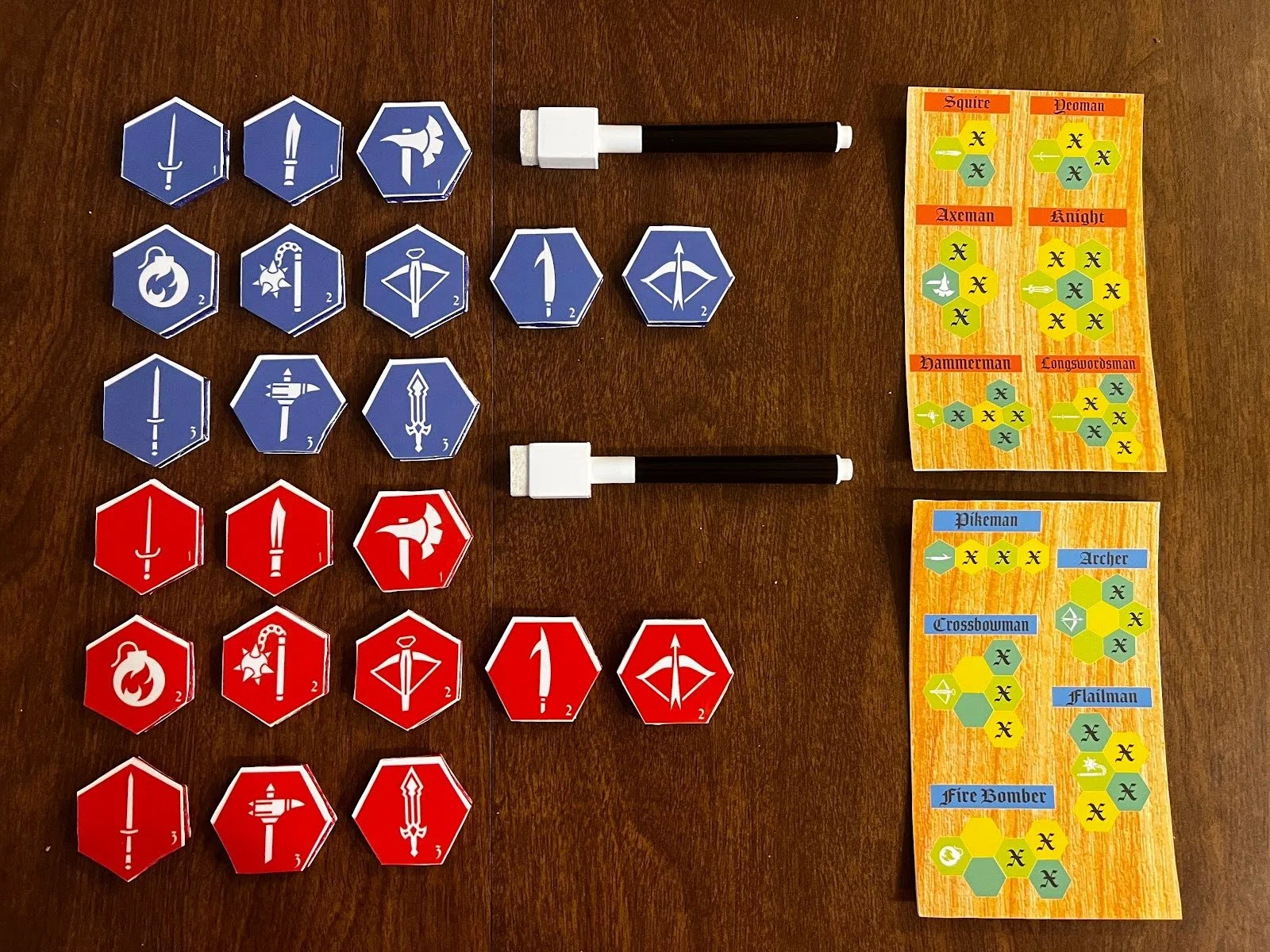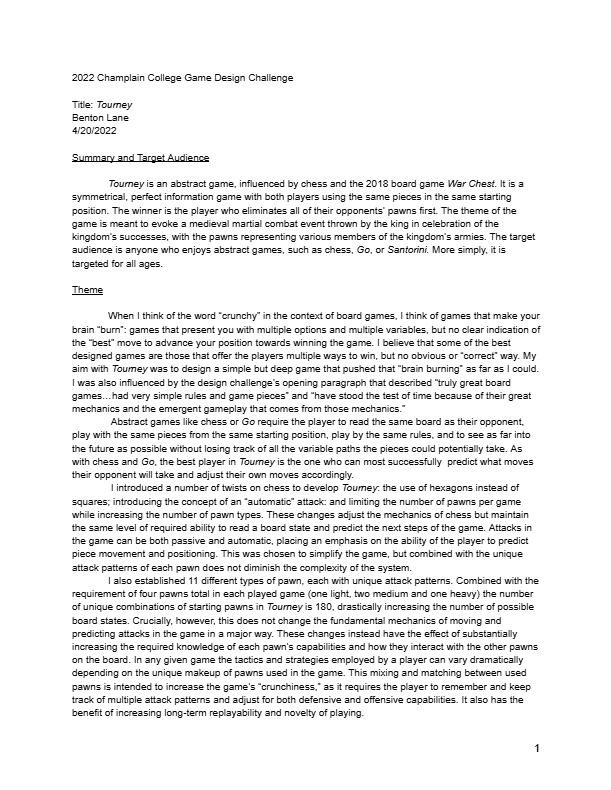Tourney
Every year as part of the application process for the game design program at Champlain College, applicants are required to design a board game according to a theme and strict component limits. The theme for when I applied? Crunchy.
I distinctly remember sitting in the Zoom call with the admissions officer for transfer students going over everything I’d need to provide to apply for the program - as soon as I saw the theme, my brain immediately wanted to think about nothing else. I can hardly remember what the rest of the meeting was about.
In a real way, diving into board games during the pandemic was the start of my journey towards working in game development. It is the perfect intersection of all the major interests of my life; thinking about why people make the decisions they do, building systems to explore those decisions, and above all making people feel joy through those experiences. So I was eager to show my design potential with this portfolio piece to show I was worthy of the game design program.
Year : 2022
Genre: Strategy
Platform: Board Game
Developed In: Illustrator
Team Size: 1
The first version of Tourney’s board
The portfolio piece had strict requirements:
Only one board, which had to fit within one 11”x17” piece of paper
It must use pawns, and no more than 20 per player
And only two of the following:
Dice: no more than 2 per player
A spinner
A popper
No more than 10 unique cards (duplicates however are allowed)
A score sheet and pencil/pen
Markers or other drawing implements
And the theme: “Crunchy”. To me, crunchy board games are the ones that make your brain burn and steam come out of your ears as you try to figure out the next best move. These are games where there is no clear “right” move, and the winner often comes down to who can extrapolate out the most moves the furthest. And what game has been doing that hundreds of years? Chess! (Yes, my first instinct was to try to improve on chess. I know.)
But obviously, I can’t just recreate chess wholesale. There were certain elements of chess that i wanted to iterate on - positioning and attack timing - and elements I wanted to introduce - variable classes and board set ups - to really evolve the basic play structure of the game.
The second version of Tourney’s board, now with the start of proper illustrations
So I started with a few simple changes. First, a hexagonal grid instead of a square grid. This allows for the orientation of the pieces to change depending on player choice, increasing the playspace from a binary up/down orientation to one that utilizes eight degrees of orientation instead of chess’ two. It also allows for more pawn maneuverability, which in turn leads to the playspace itself feeling “larger”.
Next, I introduced “classes” for the pieces; light units, medium units, and heavy units. Each class had tradeoffs - light units moved the furthest, but had the smallest attack spaces, heavy units moved the least but had the largest attack spaces, and medium units are balance of the two. Each set up of the game compromises of the players picking one light unit, two medium units and one heavy unit. With the number of units I developed (3 light, 5 medium and 3 heavy), there are 180 possible starting combinations of units!
Finally, I changed the timing of when pawns attack. Instead of maneuvering pawns into each other like chess, I wanted to introduce “attacks of opportunity”, in keeping with my theme of the pawns participating in a tourney with their specialized weaponry. So now, pawns have a certain amount of health depending on their class, and take damage when they enter or exit an opposing pawn’s area of attack. This leads to much more nuanced decision-making for players, where they need to balance the need for position for future attacks versus the need to keep their pawns alive (first player to lose all their pawns loses).
The third version of Tourney’s board, now with custom pawn pieces and printed rulebook
I knew I had nailed my own goals for the game’s design when during a playtesting session, one of my friends took more than five minutes to make a move; we had to institute a chess clock after that game to make sure games didn’t run for more than half an hour.
To this day, Tourney remains one of my proudest game designs. It does a lot with very little, and helped set me on the path to working on making games. I had to teach myself how to use Illustrator, how to playtest with real people and iterate on their feedback, and the joy of watching creating something people wanted to engage with again and again because it is fun.
I’ve attached the submission essay that got me into the program below, as well as high-resolution images of the game board and game pieces used for the final version of the game - the rules for the game are included in the essay. Please feel free to print/make your own copy of the game, and let me know what you think!
The final version of Tourney’s board
My final submission for the program
The game pieces of Tourney





